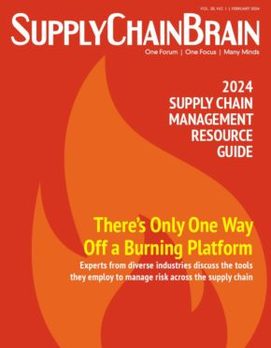
Think Tank
Three Things Consumers Should Understand About Supply Chains
Supply chains have been under a magnifying glass for more than a year as stories about the Suez Canal blockage and product shortages in nearly every industry have seeped into mainstream news. Prior to 2021, “supply chain management” was something the average consumer didn’t have to think about.
This year, we're seeing similar issues persist and new ones arise. Disruptions in the shipping process, delayed arrival times, and an increase in media coverage have all raised awareness for consumers. Yet, there are many more factors that impact the supply chain which continue to go unknown, and that industry outsiders simply can’t solve.
Finding a solution to supply chain disruptions is complex. And in order to move forward it is critical to address the many moving parts that impact the supply chain and understand where exactly we are in the current landscape. The following elements are essential in consumer understanding of the supply chain, as well as for shippers and companies looking to create efficiencies across the industry.
Shipment Volumes
Shipment volumes peaked last year, with the ports of Los Angeles and Long Beach processing a record 20.1 million twenty-foot equivalent units (TEUs). Some ports decided to increase the number of hours they were open in an effort to keep up with shipment volumes.
This unfortunately didn’t prove to be as successful as hoped due to the ongoing driver shortage, where the industry is facing a demand problem. There are a few solutions being discussed around like a federal pilot program that would get more drivers on the road by lowering the commercial driver's license (CDL) age to 18 from 21. Yet research from the International Foodservice Distributors Association shows the average age for truck drivers in the U.S. is 46. This stat alone highlights that attracting young talent may be more difficult than it sounds.
Inventory Turnover
With each step of the shipping process critical, understanding how much inventory is being sold and replaced is crucial since this process is often delayed. Simply put, companies shipping products should aim to stay ahead of the curve and anticipate demand by pre-ordering. Consumers can look ahead as well to help better prepare for key moments on the horizon.
Understanding inventory turnover is key as it can increase profits and help the supply chain flow with ease. Companies need to find the perfect balance between inventory levels and sales. Too much stock can result in wasting space and money on holding costs, while too little stock can result in a loss in sales and leaves consumers empty handed. In other words, inventory turnover is an important element of effective supply chain management.
Warehousing
Warehousing, the process of storing inventory for sales and distribution, is suffering a capacity crunch across the U.S. While there is no quick fix to build more warehousing spaces, there is an opportunity for warehouses to use technology to help automate processes and increase efficiencies.
Technology is just one solution helping to improve efficiencies and sustainability in the logistics management ecosystem, including warehouse space. By implementing a centralized system with immediate data visibility, transportation managers can become better equipped to confidently make spur-of-the-moment changes regardless of ever-changing supply chain conditions. Additionally, it’s essential to simplify transportation management as much as possible, prioritizing agility and flexibility. Moving forward, simplicity and seamlessness can assist in the shipping process and give customers ease of mind.
These insights can provide the industry with a roadmap of where we are headed and help consumers have a better understanding of supply chain complexity. It’s critical to analyze the lessons learned from supply chain disruptions in the last two years to avoid future crises. When analyzed and leveraged appropriately, fundamental information such as shipment volumes, inventory turnover, warehouse procurement, and more can help the industry to make significant business decisions. Determining what information is needed and which data to track can seem daunting but will ultimately shape more holistic conclusions about managing the supply chain.
Lindsey Shellman is chief commercial officer at Centerboard.






